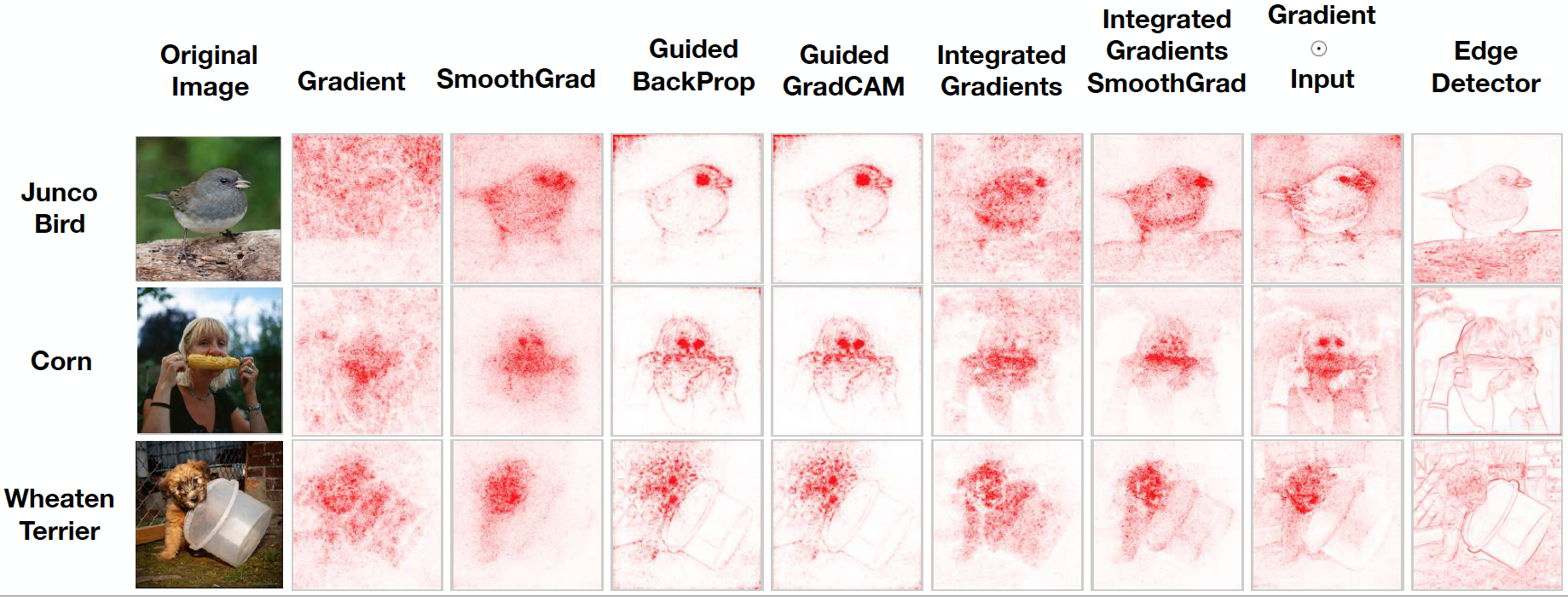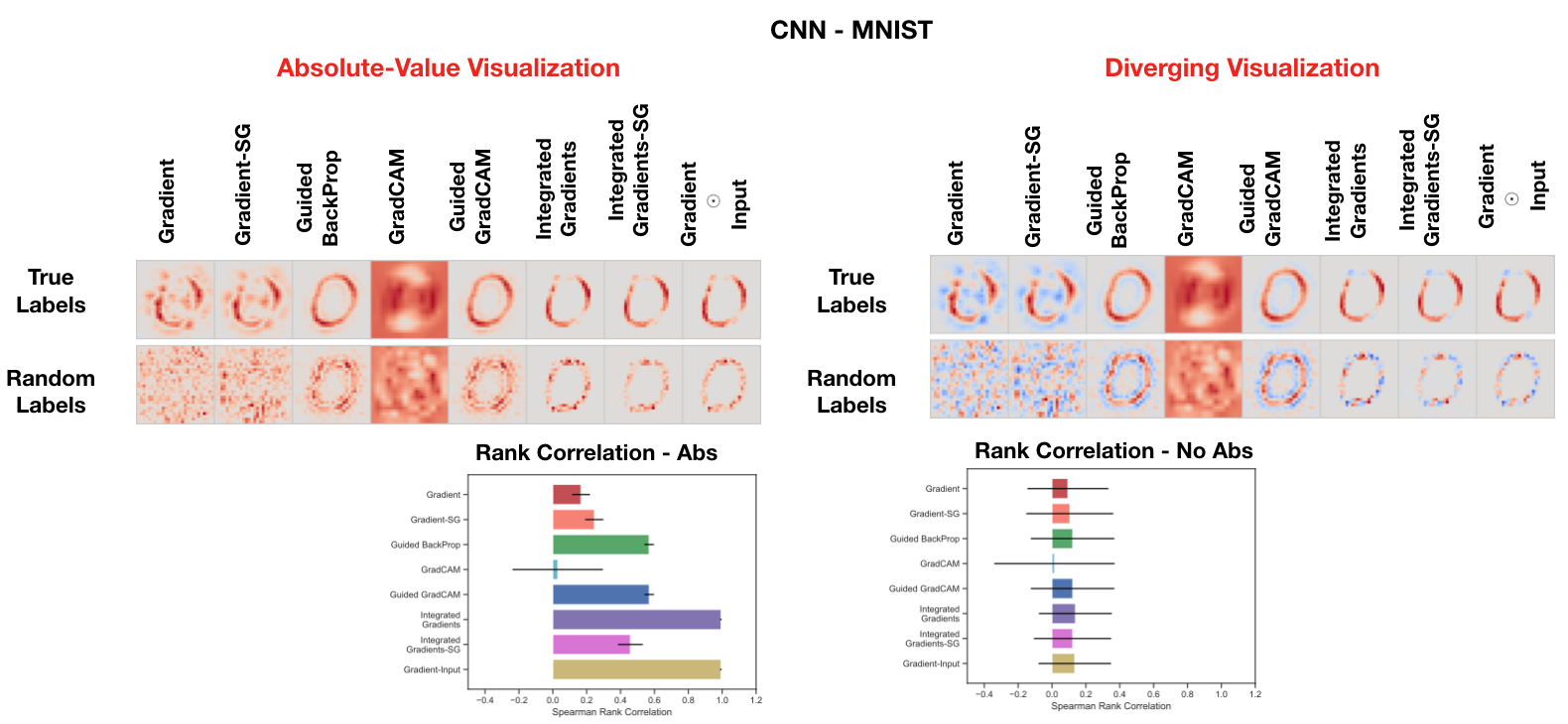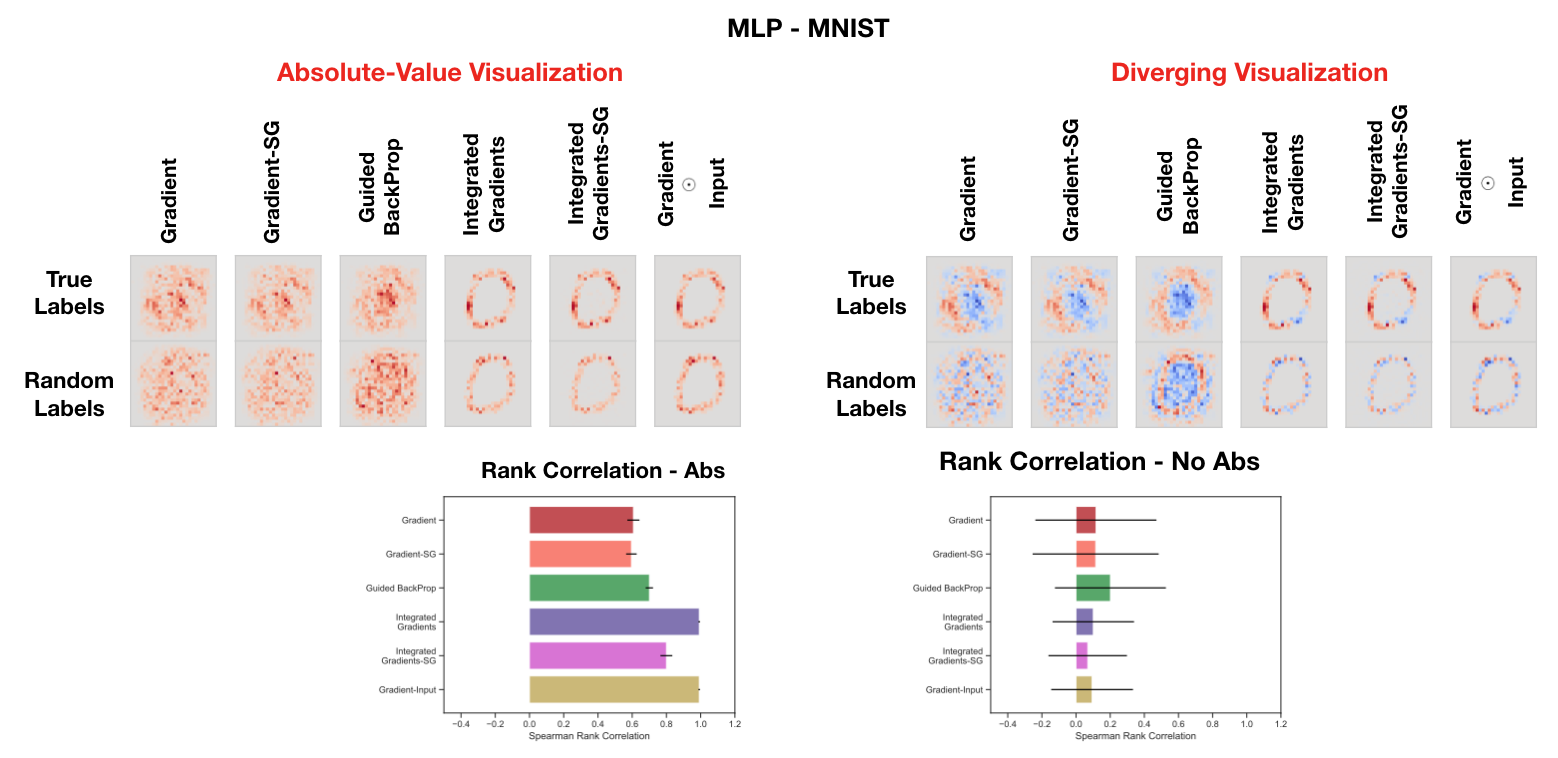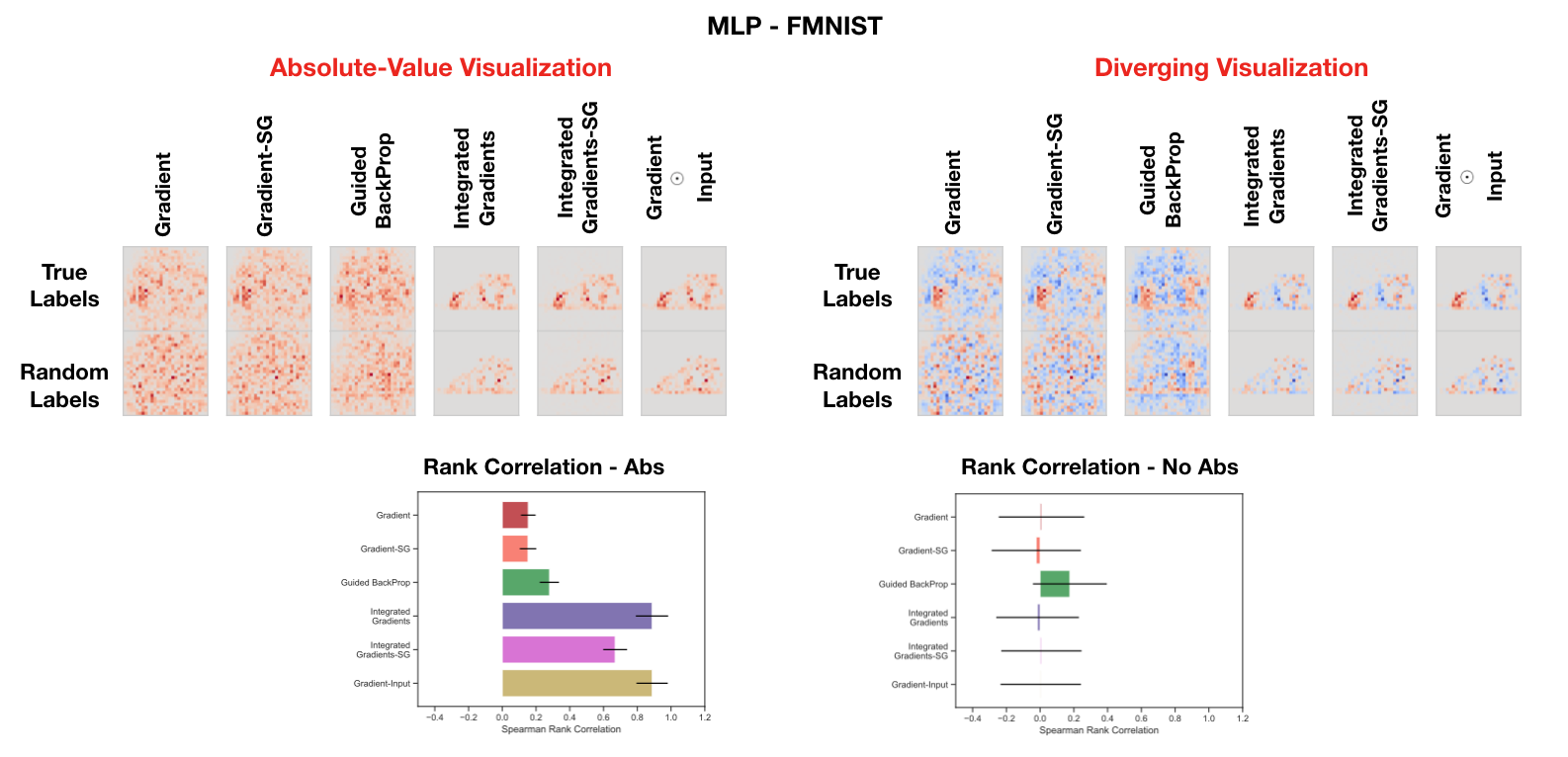This repository will be updated with code to replicate the paper
Sanity Checks for Saliency Maps by
Julius Adebayo, Justin Gilmer, Michael Muelly, Ian Goodfellow, Moritz Hardt, & Been Kim.
Saliency methods have emerged as a popular tool to highlight features in an input deemed relevant for the prediction of a learned model. Several saliency methods have been proposed, often guided by visual appeal on image data. In this work, we propose an actionable methodology to evaluate what kinds of explanations a given method can and cannot provide. We find that reliance, solely, on visual assessment can be misleading. Through extensive experiments we show that some existing saliency methods are independent both of the model and of the data generating process. Consequently, methods that fail the proposed tests are inadequate for tasks that are sensitive to either data or model, such as, finding outliers in the data, explaining the relationship between inputs and outputs that the model learned, or debugging the model. We interpret our findings through an analogy with edge detection in images, a technique that requires neither training data nor model. Theory in the case of a linear model and a single-layer convolutional neural network supports our experimental findings.
For the model randomization test, we randomize the weights of a model starting from the top layer, successively, all the way to the bottom layer. This procedure destroys the learned weights from the top layers to the bottom ones. We compare the resulting explanation from a network with random weights to the one obtained with the model’s original weights. Below we show the evolution of saliency masks from different methods for a demo image from the ImageNet dataset and the Inception v3 model.
In our data randomization test, we permute the training labels and train a model on the randomized training data. A model achieving high training accuracy on the randomized training data is forced to memorize the randomized labels without being able to exploit the original structure in the data. We now compare saliency masks for a model trained on random labels and one trained true labels. We present examples below on MNIST and Fashion MNIST.
See /doc/data/ for the exact ImageNet images used in this work.






